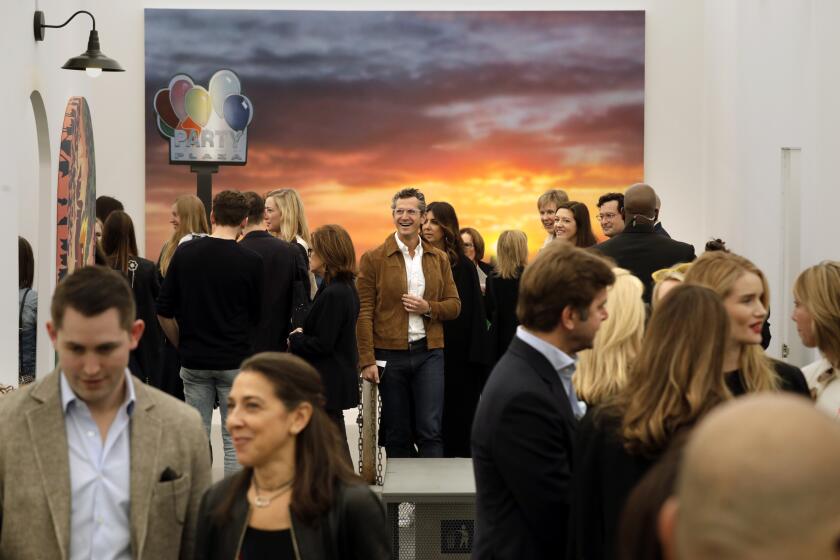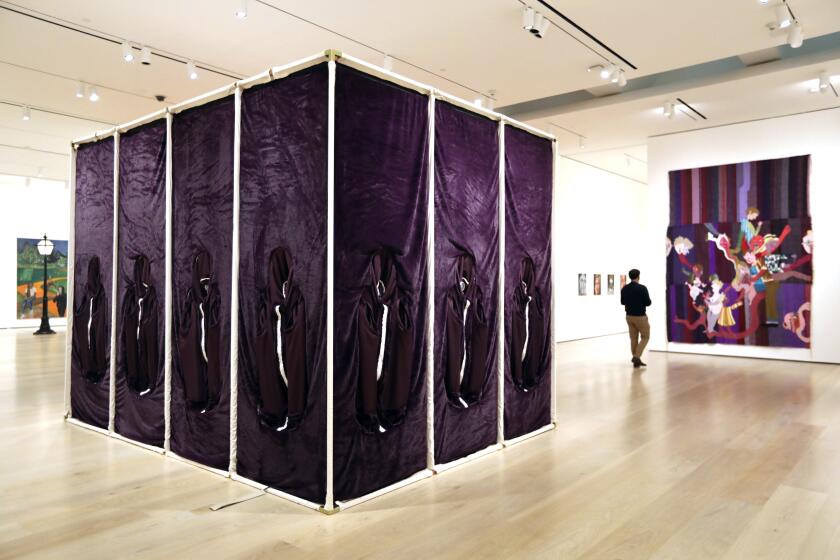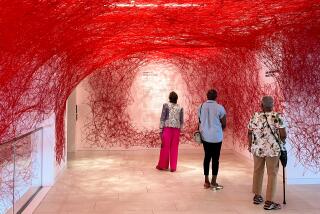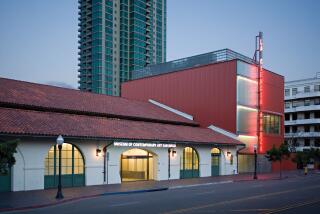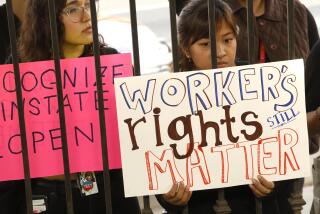How hard has COVID hit American museums? A new survey predicts a grim future
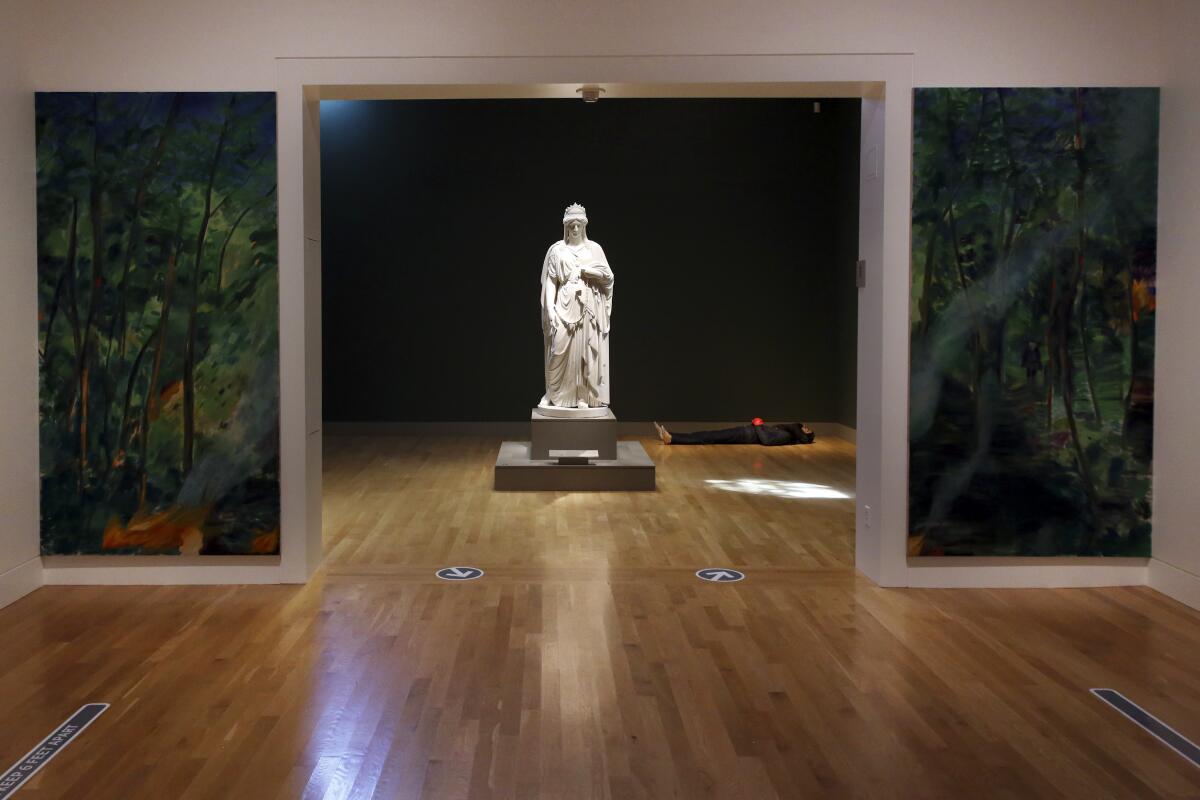
- Share via
Eight months into the pandemic, the American Alliance of Museums on Tuesday released its second survey exploring the consequences of COVID-19, and predictions for the future are bleak.
Many museums may not be able to rebound from the dire financial strain brought on by months of COVID-19-related closures, according to the nonprofit accreditation and advocacy group based in Washington, D.C. Its recent survey of 850 museum directors asked, “Do you believe there is a significant risk of your museum closing permanently in the next 12 months, absent additional financial relief?” In response, 12% of museum directors said yes; 17% said they were not sure, and the rest said no.
“It’s having a devastating effect on museums,” AAM President Laura Lott said of the closures. “And it’s not getting any better.”
Admission, along with café and retail sales, are key revenue streams for museums, nearly 30% of which are closed, according to the survey. Museums that have opened during the pandemic are operating at vastly reduced capacities to maintain social distancing. These museums, on average, are seeing 35% of their typical attendance.
The third installment of Frieze L.A. gets rescheduled because of the pandemic — and moves to venues across Los Angeles, highlighting the city’s architectural history.
The average loss per institution is about $850,000 through October, the survey found. Directors estimated that their museums will lose about 35% of total 2020 budgeted operating income.
Zoom panel discussions, virtual fundraising galas and other digital events are not evening the score. Revenue from digital events, the survey found, has fallen 34% short of revenue goals for in-person events.
Opening during the pandemic has meant instituting often laborious and costly safety measures, including installing Plexiglas barriers, social distancing signage and hand sanitizing stations, as well as implementing new reservation systems and re-routing foot traffic through exhibitions to create one way pathways. The survey found that museums spent an average of about $27,000 to reopen safely. The bigger the museum, the higher the expenditure — upward of $750,000 for some.
Of the museums surveyed, 52% said they had six months or less of financial operating reserves to stay afloat; 82% said they had funds in reserve to cover 12 months or less.
“It’s not a sustainable scenario,” Lott said. “Museums are spending money not just when people are there, but all the time to take care of their facilities, to care for their collections, to provide online services. So they’re spending down their savings every day, every month, even while they’re closed.”
The survey was conducted in mid-October by AAM and the Seattle-based Wilkening Consulting. It included small, midsize and large museums from around the U.S., including art museums, aquariums, historical societies, science museums and botanical gardens.
AAM’s last COVID survey, released in July, found that 44% of museums had laid off or furloughed staff. The new survey found that number had risen to 53%. Frontline workers at museums, such as front desk attendees and visitors services staff, have taken the biggest hit, 68% of museums said. Education was the next most impacted area, 40% of museums said, followed by maintenance and security at 29% of museums, and collections staff at 26% of museums.
In a pre-pandemic world, museums were responsible for 726,000 salaried and contracted jobs annually, according to AAM’s 2018 “Museums as Economic Engines” report.
California’s museum closures have been nearly constant. Every major museum closed at the start of the health crisis in mid-March. On June 12, museums in L.A. County got a green light from state and county officials to reopen. Some did so immediately, but the freedom was short-lived: On July 1, in response to rising COVID-19 infections, Gov. Gavin Newsom ordered indoor museums closed again.
Just as in other regions of the country, the COVID case count in L.A. County is swelling. On Monday, California saw a single-day record of 13,412 cases.
The surge, Newsom said Monday, “is simply the fastest increase California has seen since the beginning of this pandemic.” He announced the rollback of reopenings across the state.
The forecast for museums, amid these closures and without financial relief, looks stormy, Lott said.
“The federal government and the state and local governments have really failed museums by not providing the kind of financial relief that’s needed,” she said. “We need that for museums because we can’t, as a society, afford to lose thousands of them.”
Especially now, Lott added.
“Museums provide enrichment, a place for solace and recovery from the devastation and trauma everyone is feeling as a result of this time,” she said. “And wouldn’t it be a tragedy if, when we come out of the pandemic, we don’t have museums to go to.”
The Hammer Museum’s 2020 biennial, this year presented with the Huntington, waits for pandemic restrictions to lift. It could take months — or not happen at all.
More to Read
The biggest entertainment stories
Get our big stories about Hollywood, film, television, music, arts, culture and more right in your inbox as soon as they publish.
You may occasionally receive promotional content from the Los Angeles Times.
